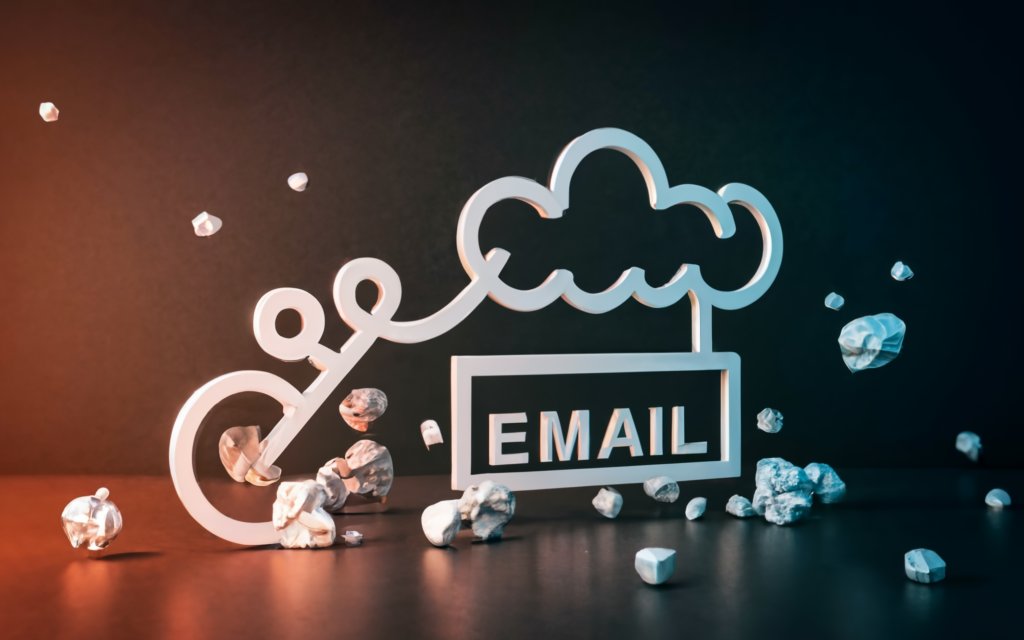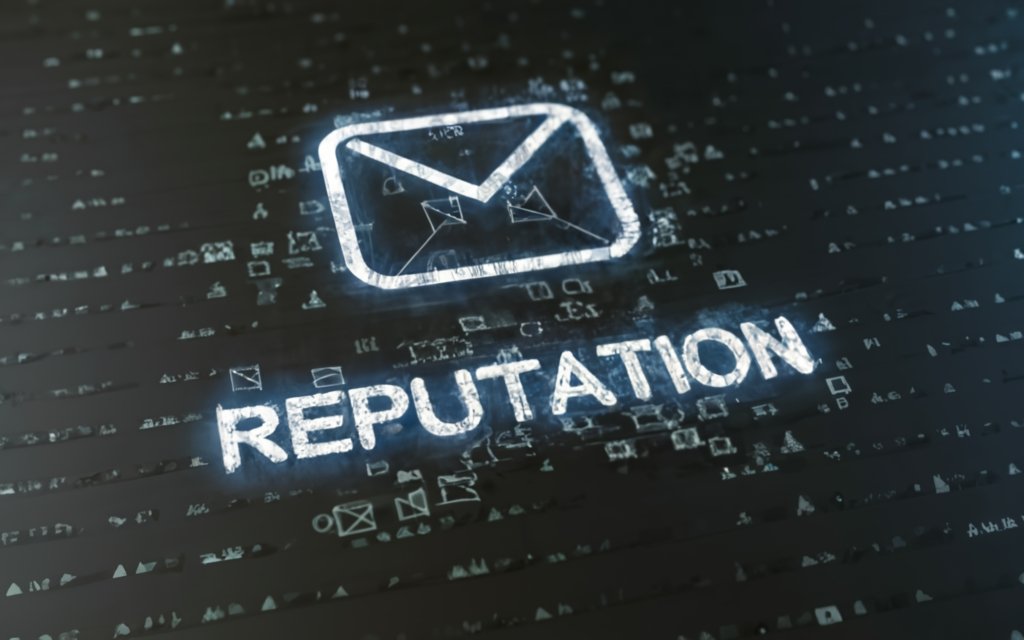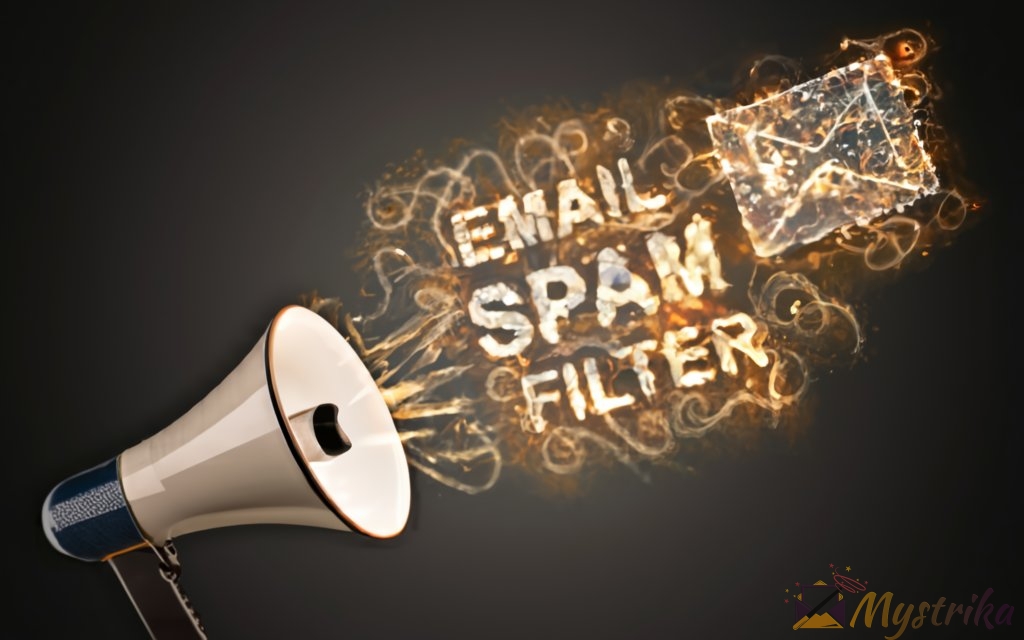Nothing is more frustrating than hitting send on an email, only to have it end up in the dreaded spam folder blackhole. But with the right diligence and tools, you can stop emails from being incorrectly marked as spam. This comprehensive guide reveals how to analyze emails for spam triggers, improve sender reputation, safely handle mislabeled messages, and troubleshoot deliverability declines. Follow these best practices and your most important emails will safely land in inboxes.
How Email Spam Filters Work
Email spam filters analyze incoming messages and evaluate whether they are legitimate or spam. These filters use advanced algorithms and various criteria to detect spam emails and prevent them from reaching your inbox.
Understanding how these spam filters work can help ensure your important emails make it to recipients rather than getting caught in spam traps.
What Criteria and Signals Do Spam Filters Use?
Spam filters evaluate multiple attributes of each email to determine the probability that it is unwanted spam:
Sender Reputation
Filters check the sender’s email address, IP address, and domain name against databases of known spammers. Emails from senders with a history of sending spam are more likely to be blocked.
Message Content
The content, including the subject line and body text, is analyzed for spammy words, phrases, and formatting. Certain keywords like “Free!” and “Limited time” will raise red flags.
Link and Attachment Analysis
Suspicious links and attachments that may contain malware are identified. Emails with too many links from different domains are seen as higher risk.
Spam Traps
Dummy “honeypot” email addresses are used to catch unsolicited emails. Messages sent to these traps get automatically flagged as spam.
User Complaints
Recipients marking emails as spam or unsubscribing trains filters to better identify unwanted messages.
Engagement Metrics
Low open and click rates signal recipients are ignoring emails, so similar future messages may go to spam.
Email Authentication
Lack of valid SPF, DKIM, and DMARC records makes it easier to spoof the sender, indicating higher spam risk.
How Do Major Email Providers Filter Spam?
While techniques vary between providers, most use advanced AI and machine learning to continually refine spam detection:
Gmail
Gmail priorities recent user feedback on messages to train its algorithms. It also relies on public blacklists, anonymity analysis, sandboxing suspicious content in a separate environment, and more.
Outlook and Hotmail
Microsoft’s SmartScreen filters utilize IP and domain reputation data, heuristics, machine learning, and user complaints to identify junk mail and phishing attempts.
Yahoo Mail
Yahoo Mail leverages automated systems and user feedback. Senders can check their domain’s Deliverability Dashboard for issues.
Apple iCloud
Apple uses probabilistic and machine learning models that analyze message attributes and content to classify emails as spam or not spam.
Avoiding False Positives: Legitimate Emails Marked as Spam
Sometimes email spam filters incorrectly flag legitimate messages as spam, known as false positives. There are a couple common reasons this happens:
Using Spammy Language
Even if your message has good intentions, spammy words and phrases may accidentally trigger the filters. For example, overusing “Free” or “Buy now” could signal unwanted marketing content.
Low Sender Reputation
If you are a new sender without an established domain and IP reputation, filters will be more likely to assume your emails are risky, even if the content is fine.
Here are some tips to avoid false positives so your emails arrive safely:
- Carefully check messages for unintended spam triggers before sending. Use spam checkers to detect any risky language.
- Warm up new IP addresses by gradually increasing sending volume to build a good reputation.
- Ensure proper authentication records like SPF, DKIM, and DMARC are set up for your domain.
- Ask recipients to whitelist or “allow” your email address if messages erroneously go to spam.
- Use double opt-in signup flows when collecting email addresses to confirm valid and engaged subscribers.
Checking Emails for Spam Triggers
Before pressing send, it’s smart to analyze your email content, links, attachments, and other attributes that could activate spam filters.
Avoid These Common Spam Trigger Words
| Spammy Words | Better Alternatives |
|---|---|
| Buy now! | Visit our store |
| Free gift! | Complimentary gift |
| Earn cash | Supplement your income |
| Meet singles | Connect with others |
| Limited time | For a limited time |
Avoid hyperbolic language and urgent calls to action. Use more neutral, customer-focused wording.
Format Clean HTML Emails
- Use a single standard font family and keep styling simple.
- Only include relevant images; don’t overdo animated GIFs.
- Make sure links are clean and text accurately reflects destinations.
- Avoid large or mixed-content HTML emails; opt for plain text when possible.
Carefully Check Any Attachments
- Never attach executables (.exe) or similar file types that can contain viruses.
- Consider hosting larger files like PDFs and docs on your website instead of attaching them.
- Remind recipients in the email body text if you have attached files.
Analyzing messages for subtle signals like these before sending helps your email stay out of the spam trap.
Avoiding False Positives
Sometimes even legitimate emails get incorrectly flagged as spam, known as false positives. Here are some common reasons this happens and how to avoid it:
Why Do Legitimate Emails Get Marked as Spam?
There are two main reasons valid emails accidentally get caught by spam filters:
Using Language That Sounds Spammy
Words like “Free!” and “Buy now” will often trigger filters, even if you have good intentions. Overusing hyperbolic language is risky.
Having a Low Sender Reputation
New senders without an established positive reputation are more likely to be perceived as suspicious and spammy.
Tips to Prevent Your Emails From Being Flagged as Spam
Here are some tips to avoid false positives so your legitimate emails make it to inboxes:
- Carefully check messages for unintended spam trigger words and phrases before hitting send. Use spam checkers to detect any risky language.
- Gradually warm up new IP addresses by increasing sending volume over time. This builds a sender reputation.
- Set up proper authentication records like SPF, DKIM, and DMARC for your domain.
- Ask recipients to whitelist or “allow” your email address if messages incorrectly go to spam.
- Use double opt-in signup flows when collecting email addresses to ensure valid and engaged subscribers.
Checking Emails for Spam Triggers
It’s important to analyze your email content, links, attachments, and other elements before sending to avoid activating spam filters. Here’s what to check:
Spam Trigger Words to Avoid
Be cautious about using hyperbolic words like:
- Free
- Buy now
- Earn cash
- Limited time
Instead, use more neutral language focused on the customer.
Formatting and Design Choices
- Use standard fonts and keep styling simple.
- Only include relevant images.
- Ensure links are clean and accurately reflect destinations.
- Consider plain text only emails.
Suspicious Links and Attachments
- Never attach dangerous file types.
- Consider hosting larger attachments online.
- Remind recipients about any attachments.
Reviewing these factors helps ensure your email skips the spam trap!

Testing Emails Before Sending
Before hitting send on an email campaign, it’s crucial to test your messages for spam triggers. Analyzing emails with spam checkers and deliverability tools helps avoid ending up in recipients’ junk folders.
Ways to Analyze Emails for Spam Signals
There are a few techniques you can use to evaluate your emails:
Scan for Problematic Content
Review the content for spammy words, urgent calls to action, or other red flags. Read through the copy or use an online spam words checker.
Check Authentication and Reputation
Verify SPF, DKIM, and DMARC are set up correctly for sender authentication. Also check your domain and IP reputation.
Review Link and Attachment Safety
Click all links to ensure they lead where expected. Double check attachments are safe and scan for malware.
Examine Deliverability Factors
Inspect elements like subject line length, formatting, images, and HTML/text ratio that influence deliverability.
Send Test Emails
Forward test messages to personal accounts at major email providers to see if they land in spam folders.
Using Email Spam Checking Tools
Specialized tools like spam checkers and deliverability tests make it easy to analyze emails:
Spam Words Checkers
Paste your email content into an online spam words checker to identify problematic language. Replace risky words and phrases it detects.
Deliverability Tests
Use free deliverability testing tools to get spam scores and inbox placement estimates for major email providers.
Link Safety Scanners
Run your links through link scanners to check for blacklisting issues or malicious redirects.
Attachment Scanning Tools
Upload attachments to online scanners to check for hidden malware or viruses before attaching them.
Authenticity Tests
Confirm correct SPF, DKIM, and DMARC setup using authentication testing tools.
Content Checkers and Spam Word Scanners
Analyzing email copy and subject lines using spam checkers helps avoid risky language that triggers filters.
Checking Subject Line and Body Copy
Paste your email content into a spam word checker to identify problematic words and phrases to remove or rewrite. Keep scanning until no flags come up.
Identifying and Removing Spammy Language
Watch for hyperbolic words (Free, Sale), urgency (Act now!), exclamation points, all caps, and unconventional punctuation. Replace these with more neutral language.
Optimizing for Specific Providers
Some providers like Gmail penalize certain terms more heavily. Research their policies and optimize content accordingly.
Deliverability Tests and Spam Filters
Testing inbox placement and spam scores informs you if emails will land in spam before sending.
Testing Inbox Placement with Major Providers
Use free deliverability testing tools to see if messages will likely hit the inbox or spam folder for popular providers.
Checking Spam Scores and Sender Reputation
Higher spam scores and poor sender reputation leads to lower inbox rates. Check them ahead of time to identify issues.
Diagnosing Deliverability Pain Points
If tests show suboptimal placement and scores, they provide details on which elements need improvement to increase deliverability.
Why Test Before Sending?
Running emails through spam and deliverability checks is essential because:
- It allows you to optimize content and branding to avoid false positives.
- You can fix authentication issues and build sender reputation prior to outreach.
- Diagnosing problems beforehand prevents damaging inbox placement.
- It ultimately ensures recipients actually see your valuable emails.
Testing mail enables you to confidently send campaigns knowing they will safely land in inboxes rather than languishing in spam folders.

Improving Your Sender Reputation
Having a good sender reputation ensures emails bypass spam filters and reach inboxes. You can build reputation by setting up proper authentication, warming up IPs, maintaining healthy metrics, and more.
DNS Records: SPF, DKIM, and DMARC
Proper DNS records confirm you as a legitimate sender and improve deliverability:
SPF (Sender Policy Framework)
An SPF record lists authorized servers that can send emails from your domain. Enable this to prevent spoofing.
DKIM (DomainKeys Identified Mail)
DKIM uses cryptographic authentication to confirm emails are really from you and untouched in transit.
DMARC (Domain-based Message Authentication, Reporting, and Conformance)
DMARC aligns SPF and DKIM, reporting issues to improve authentication. Gradually enforce stricter policies.
Warming Up IP Addresses
When starting email campaigns from a new IP address, warm it up by:
- Beginning with small volumes like 50 emails per day.
- Slowly increasing sending by 25-50% weekly as reputation builds.
- Targeting engaged subscribers who often open and click your emails.
This conservative approach prevents being flagged as spam when new.
Building a Good Sender History
Consistently sending quality content, maintaining email hygiene, and closely monitoring metrics like opens, clicks, and bounces will generate positive sender patterns and reputation.
Monitoring and Maintaining Deliverability
Ongoing monitoring and hygiene keeps your sender reputation and deliverability high:
Watch Open and Bounce Rates
High opens and low bounces indicate engaged recipients and quality lists. Focus on keeping metrics in the optimal range.
Regularly Re-Validate Email Lists
Re-check email validity every 3-6 months to scrub invalid addresses harming reputation. Use an email verification API for automated monitoring.
Update Content and Branding
Keeping content and design fresh and relevant ensures recipients remain engaged, improving reputation.
Why Is Sender Reputation Important?
Focusing on sender reputation is crucial because:
- Good reputation means emails easily avoid spam filters and land in the inbox.
- Poor reputation leads to lower placement and deliverability issues over time.
- Spam complaints directly damage your sender score with major ISPs.
- Engaged recipients are less likely to report your emails as spam.
Proactively building positive sender reputation ensures your mailing domain and IPs maintain excellent standing to keep deliverability high. Monitoring key metrics and revalidating subscribers allows you to identify potential reputation issues early and course correct. This prevents deliverability from gradually declining and your emails from slipping into spam.
Monitoring and Maintaining Deliverability
You need to continually monitor key metrics and trends to maintain great deliverability over time:
Watch Open and Bounce Rates
Keep open rates high and bounce rates low. Both signal engagement and list quality.
Regularly Re-Validate Email Lists
Re-check list validity every 3-6 months to remove inactive addresses hurting reputation.
Update Content and Branding
Keep content and design fresh to maintain recipient engagement and improve reputation.
Ongoing monitoring like this prevents gradual deliverability declines and keeps your sender reputation strong.

Handling Emails Marked as Spam
Despite your best efforts, some legitimate emails will inevitably end up in recipients’ spam folders. Here are tips for safely managing mislabeled emails and troubleshooting deliverability problems.
Safely Checking Spam Folders for False Positives
If an important email is mistakenly marked as spam, you’ll need to retrieve it. When checking, be cautious:
- Don’t open attachments or click links unless you’re certain the email is legitimate.
- Watch for subtle differences between a real email and an impersonation.
- For suspicious messages, confirm validity by contacting the sender through another channel before interacting.
- Delete any emails you confirm are spam without opening.
Moving Legitimate Emails Back to the Inbox
If you identify a false positive spam label on a valid email:
- Select the message and click “Not Spam” or “Move to Inbox” in your email interface.
- This trains your spam filter to avoid mislabeling similar emails in the future.
- Some services like Gmail may have you complete a captcha to confirm you really want to move the message.
Unsubscribing from Unwanted Emails
If you receive an unwelcome marketing email or newsletter, use the unsubscribe link included in the message to opt out of future mailings. But be aware:
- Don’t click unsubscribe links in emails you suspect are malicious phishing attempts.
- Manually unsubscribe through the company’s website instead for safety.
- Legitimate senders are required to include working opt-out links in emails.
Getting Whitelisted: Having Recipients Add You as a Trusted Sender
If your emails continually end up in recipients’ spam folders, request they add you as a contact or trusted sender in their email client. This “allowlists” you, bypassing the spam filter. Depending on their email service, they may need to:
Gmail Whitelisting
In Gmail, adding your email address to Contacts should whitelist messages. Recipients can also create filters to never send your emails to spam.
Outlook Whitelisting
In Outlook, right click your email > Add sender to Safe Senders List. Or go to Options > Blocked Senders to allow your address.
Yahoo Whitelisting
In Yahoo Mail, recipients can add your address to Contacts. They can also click Add to Allow List when viewing an email of yours.
Apple Mail Whitelisting
In Apple Mail, recipients should add you to Contacts then create a Rule to bypass the junk filter based on sender address.
Troubleshooting Deliverability Issues
If your emails consistently go to spam or have poor placement, diagnose the root cause:
Identifying What’s Causing the Spam Filtering
Check spam scores, authentication records, sender reputation, engagement metrics, content/links, and subscriber email validity to pinpoint problems.
Resolving Specific Problems with IPs or Accounts
Address issues discovered through troubleshooting. For example, request IP delisting, improve engagement with better content, fix DKIM records, or scrub low quality subscriber addresses harming reputation.
Checking Deliverability Regularly
Periodically retest inbox placement, scores, and other metrics to confirm issues are fully resolved and deliverability has improved.
Managing Subscriber Expectations
Let subscribers know that occasional false positives may happen, and whitelisting will prevent it in the future. Being transparent builds trust.
Leveraging Backup Mailing Domains and Accounts
As a precaution, have backup domains and accounts ready in case a primary IP gets suddenly blacklisted despite your best efforts.
Mistaken spam labeling is frustrating, but carefully managing spam folders, optimizing subscriber engagement, and regularly checking reputation ensures deliverability stays high over time. Proactively troubleshooting any declines prevents reaching the point where messages always go to spam.
Getting Whitelisted by Recipients
If your email gets marked as spam, request recipients add you as a trusted sender or contact to “whitelist” you, bypassing filters.
Gmail Whitelisting
Recipients can add you to Contacts or create Filters to never send your mail to spam.
Outlook Whitelisting
Recipients should add you to Safe Senders List or unblock you under Blocked Senders.
Yahoo Whitelisting
Adding you to Contacts whitelists you. They can also use the Allow List when viewing your email.
Apple Mail Whitelisting
Adding you to Contacts then creating a Rule based on sender bypasses Apple’s junk filter.
Troubleshooting Deliverability Issues
If emails consistently go to spam or have poor placement, you need to diagnose and address the root cause:
Identify Causes
Check engagement metrics, content, links, subscriber validity, authentication records, scores, etc. to pinpoint issues.
Resolve Specific Problems
Fix problems uncovered through troubleshooting. Delist IPs, improve engagement, enable DKIM, scrub low quality lists, etc.
Re-Test Regularly
Periodically check inbox placement, scores, and other metrics to confirm problems are fully resolved.

Key Takeaways
Preventing emails from ending up in the spam folder takes diligence, but is worth the effort to improve deliverability. Here are the key takeaways:
- Understand how advanced spam filters work and leverage AI to analyze emails from senders. Look for spam based on content, links, reputation, metrics, and more.
- Check messages thoroughly before sending and use spam checking tools. Identify any unintended trigger words, suspicious links,attachments, formatting issues, etc. and optimize content.
- Properly set up authentication with SPF, DKIM, and DMARC records. Gradually warm up IP addresses to build sender reputation.
- Regularly monitor open rates, bounce rates, spam complaints, and other metrics. Maintain email hygiene by revalidating lists to sustain positive sender patterns.
- Safely check spam folders and move wrongly labeled emails back to the inbox. Add senders to your contacts and whitelist when needed.
- If deliverability declines, troubleshoot by checking scores, reputation, and validity to diagnose the root cause. Resolve specific issues.
- Consider having backup mailing domains and accounts ready in case of blacklisting issues. Be transparent with subscribers if false positives occur.
- Applying best practices across email authentication, list quality, engagement monitoring, content optimization, and troubleshooting ensures your important emails consistently reach inboxes.
Frequently Asked Questions
Below are common questions about avoiding email spam filters and improving deliverability:
How can I check if my emails will go to spam?
Use email testing tools and spam checkers to analyze content, check authentication, get spam scores, and see inbox placement estimates before sending.
Why did my email get marked as spam?
Possible reasons include spammy language triggering filters, low engagement metrics like opens/clicks, invalid or low-quality subscriber lists, lack of proper SPF/DKIM/DMARC setup, or low sender reputation and deliverability.
How do I recover email marked as spam?
Carefully check your spam folder for false positives, then select the legitimate email and click “Not Spam” or “Move to Inbox” so your filter learns.
How can I stop so much email going to spam?
Improve sender reputation by fixing authentication, warming up IPs gradually, monitoring metrics to maintain engagement, regularly revalidating subscribers, and optimizing content/branding.
How do I whitelist or allowlist an email address?
In Gmail, add the sender to Contacts.
In Outlook, add to Safe Senders list.
In Yahoo Mail, add to Contacts or Allow list.
In Apple Mail, add sender to Contacts then create Allow rule.
Why are my emails going to promotions/updates instead of primary inbox?
Algorithms determine inbox section based on engagement, relationships, relevance. Improve engagement, targeting, and value to get moved back to primary.
How can I troubleshoot deliverability problems?
Check metrics, spam scores, reputation, subscriber validity, authentication records, content, etc. to identify root cause. Resolve specific issues uncovered.
How often should I warm up and validate my email lists?
Gradually warm up new IP addresses over several weeks. Re-validate subscriber email addresses every 3-6 months to scrub inactive or invalid entries.
What’s the best way to optimize my emails to avoid spam filters?
Avoid spam trigger words, ensure proper authentication setup, carefully design content/formatting, use spam checkers to validate before sending.

